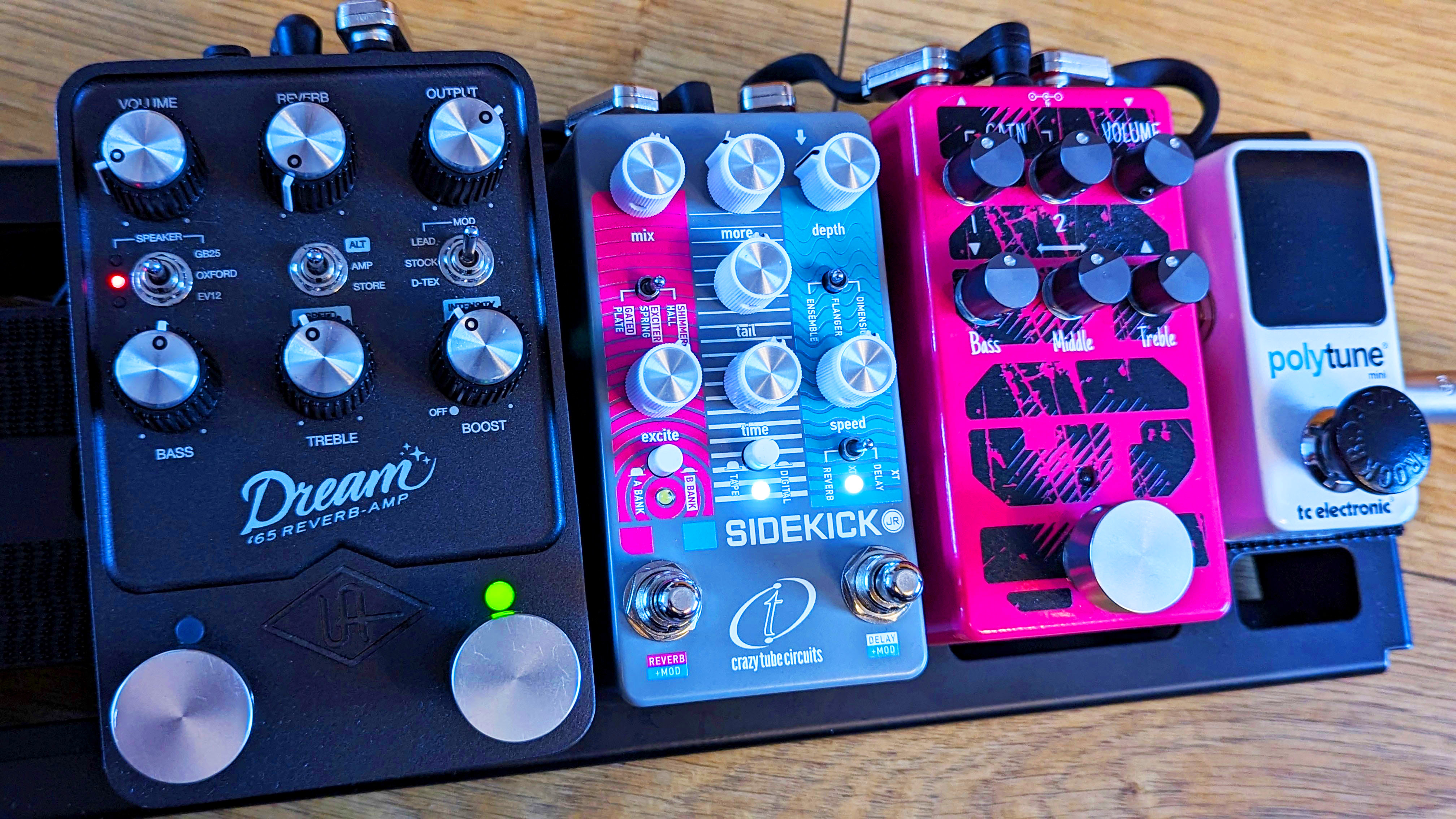MusicRadar Verdict
A really enjoyable pedal that makes a lot of sense in use. It's packed with quality sounds – especially on the reverb and modulation sides. If you're looking to streamline your pedalboard or a new, easy-to-use ally for covers sets, this could be a real space saver.
Pros
- +
Easy to use
- +
Three classic modulation sounds that are especially appealing
- +
Excellent range of classic and ambient reverbs
Cons
- -
The delays are the comparatively weak link here
- -
You'll need to buy the XT switch if you want modulation-only
- -
No stereo in and out – if that's an issue for you
MusicRadar's got your back
Crazy Tube Circuits Sidekick Jr: What is it?
This isn't the Sidekick's first rodeo; the 2019 original is larger and packing less algorithms. So this compact reverb, delay and modulation multi-effects pedal combination is a tantalising compact rig solution prospect from the Greek gurus. And it's not a combo we often come across in the market.
The art style isn't hiding the '80s leanings here but with six reverb types, two delays and three different modulation algorithms with two chorus types and flanger, the scope promises to be wider. But is it simply too much to pack into a two-button pedal? Well, CTC has had plenty of time since the first Sidekick to think about that.
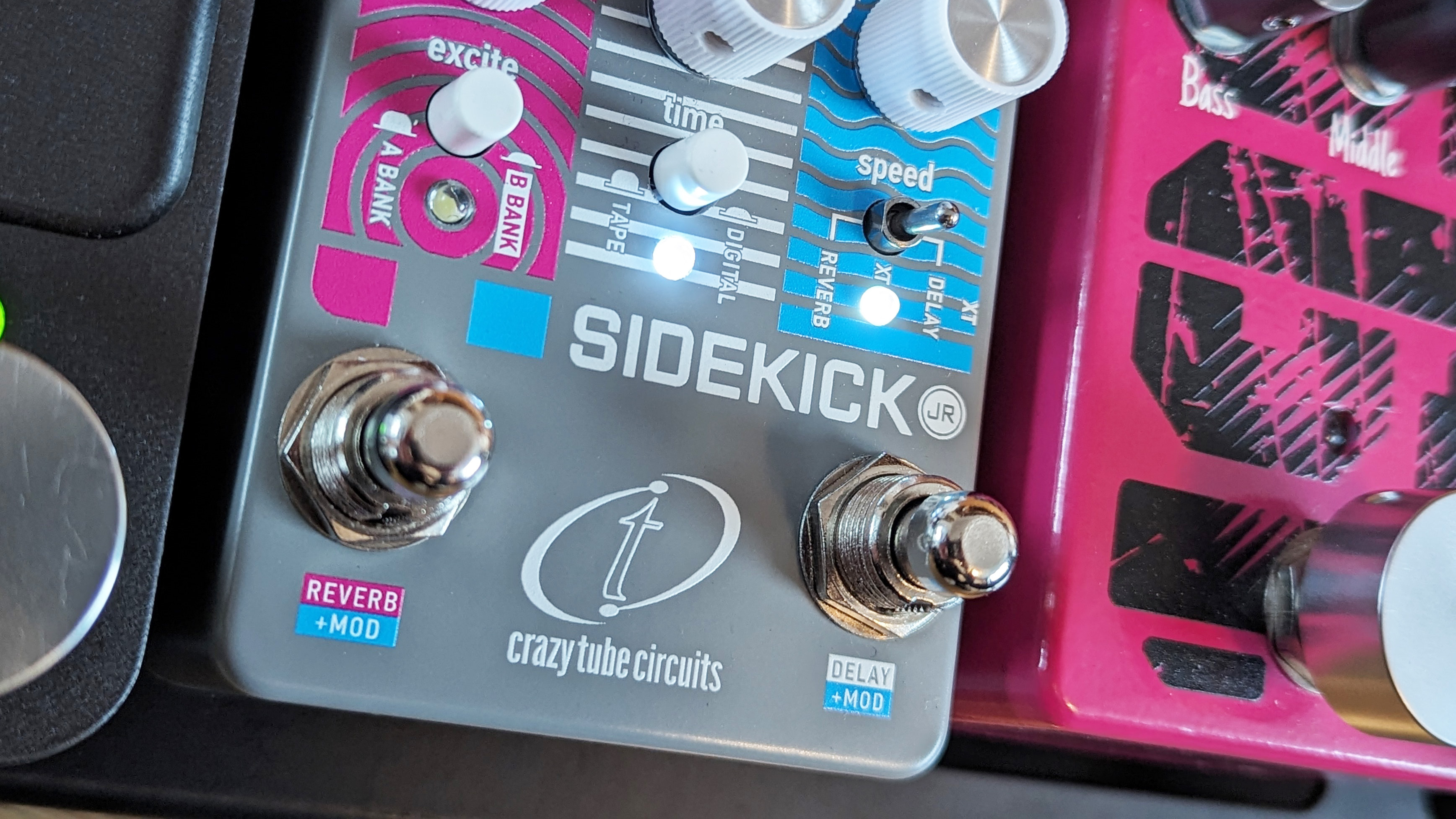
A toggle switch allows you to pair the modulation with the reverb or delay. If you want to use the modulation independently, like on the significantly wider original Sidekick, you'll need to invest in the matching mini XT footswitch for an extra €49. That's the key compromise here for the scaled-down sizing.
This isn't simply a digital pedal; the effects are digital but the buffering, mixing and filtering is analogue to create a hybrid proposition. What that equates to, we'll find out!
Crazy Tube Circuits Sidekick Jr: Performance and verdict
Things could have gotten complicated here with so much going on, but CTC has delivered a logical and intuitive control setup. A bank switch allows access to the reverb algorithms in sets of three with the more traditional Plate, Spring and Hall grouped in Bank A and the more exotic Gated, Exciter and Shimmer modes in Bank B.
The delay side is simple as there are only two algorithms to switch between with Digital and Tape, while modulation offers Ensemble, Flanger and Dimension. On the same right side as the modulation you can choose between pairing these with delay or reverb. One of those two has to be on with the modulation unless you buy the separate XT mini-switch that allows you to have true bypass modulation independently. But if you're using the pedal for always-on reverb in a compact setup that's not really an issue.
So far, so logical, but some of the control names here will catch you by surprise. The reverb's Excite control adjusts different parameters according to the reverb algorithm you've chosen. For example, it alters size and dampening for the Plate mode and decay / octave up mix in Shimmer. It's CTC means of maintaining a streamlined approach alongside some bespoke control.
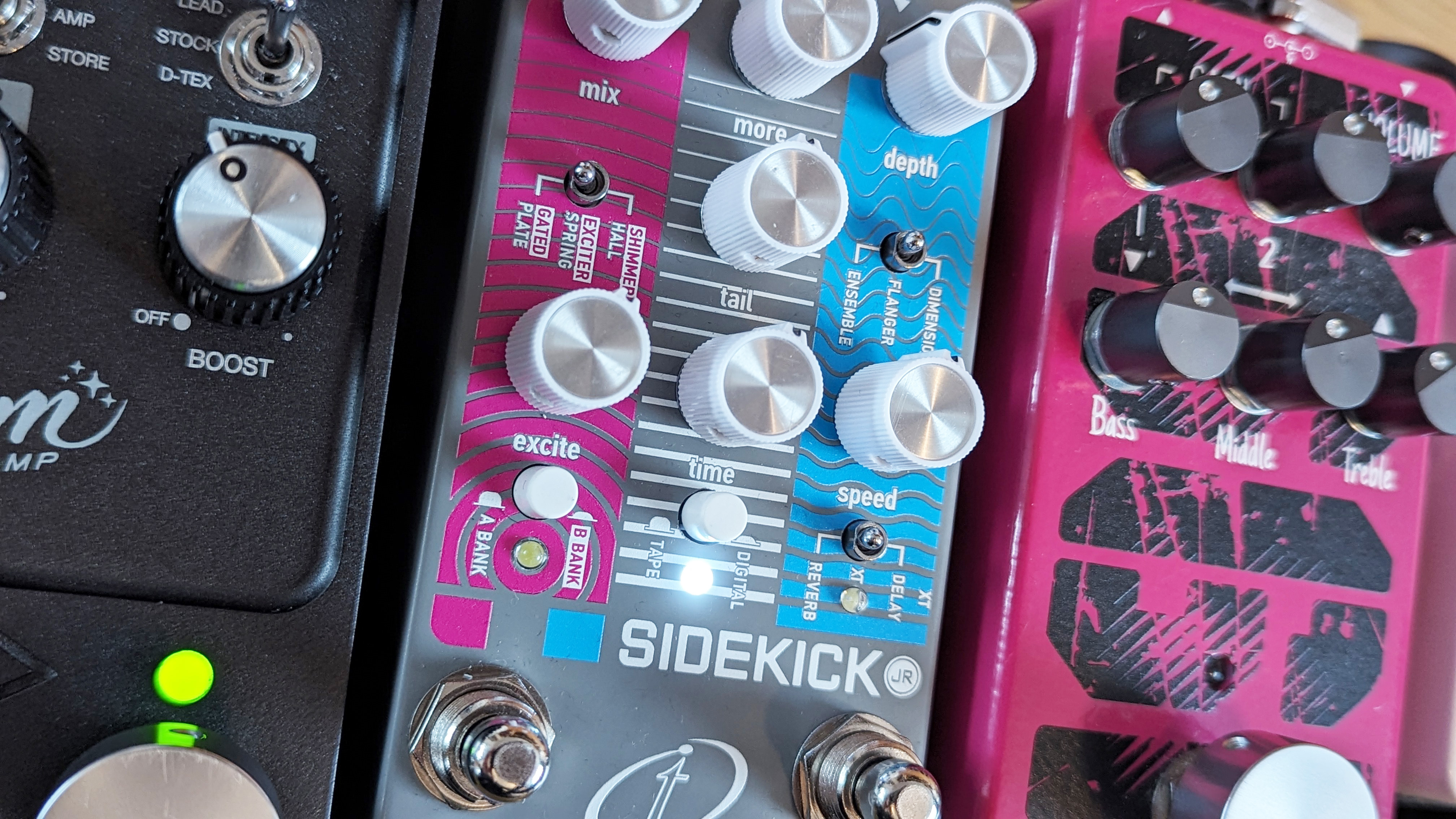
I admit it, I'm a sucker for the lush tones of the Boss Chorus Ensemble. I use a UA Astra to access in emulated form, so I immediately gravitated to the modulation section of the Sidekick Jr. And it doesn't disappoint with three superb algorithms, each with depth and speed controls.
They're pleasingly balanced between warm-sounding for digital effects but pop in the mix. They've also been chosen for tried and true appeal; the chorus mode is inspired by the bucket brigade Boss Chorus Ensemble, alongside the Dimension C 'enchancer', while the flanger algorithm is 'inspired by a classic flanger pedal being set up as a slow chorus with mild feedback added for a more metallic sound.' They will take you back to all The Police, Def Leppard and Cure places you want to go. I soon gravitate to the watery Ensemble for Robert Smith atmospherics, the flanger for some heroic '80s rock lead lines and the Dimension for crystalline power ballad arpeggios. They're wonderfully voiced and a great trio for any function band players out there. The Dimension especially could win around modulation doubters with its stunning sense of shimmery depth and clarity.
The drawback – apart from needing the mini switch to have independent modulation is there's no mix control on the pedal. Looking at the layout it's hard to see where CTC could have implemented one without making the pedal bigger, but the lack of the control means it does lean itself to the less subtle modulation tones of the '80s.
The pairing with the feast of reverb sounds here benefits the experience significantly. CTC has delivered here and then some; recalling Lexicon levels of versatility. The classic Spring, Plate and Hall algorithms drip and decay in all the right places, with the second bank of Gated, Exciter and Shimmer feeling like almost gernous bonuses. Shimmer can feel like overkill in less skilled hands, but the Excite control gives you a lot of sci-fi scope here for ambiance. Exciter is CTC's stunning big hall reverb with infinite decay with the Excite dial maxed.
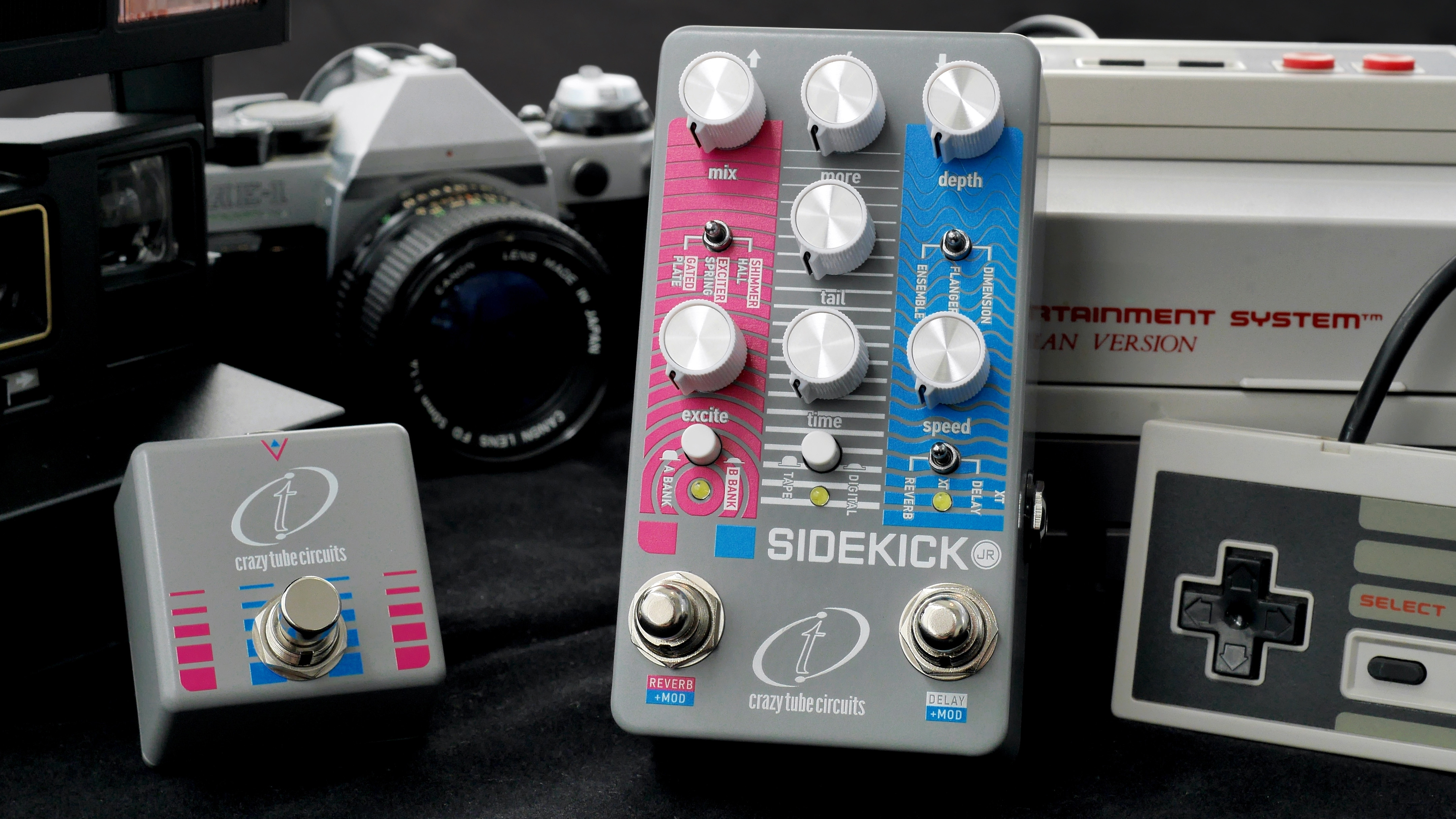
Though the Gated reverb mode screams '80s studio sounds, the scope is so wide elsewhere it pushes far beyond the era, and the quality of all six algorithms really impresses. With only two controls it's also quite freeing too for those of us who aren't big tinkerers; it's easy and quick to dial in tones here.
In comparison to these high standards, the delay section of the Sidekick Jr falls a little short, and it's the only part that hasn't seen any additions in algorithm options compared to the original Sidekick. The Digital and Echo delay modes offer a flexible 40 to 800 milliseconds delay time but aren't as distinct from each other in character as I'd anticipated. The sounds are certainly decent and combine well with the other effects but it would have been good to see some expansion from the 2019 Sidekick found elsewhere on the Jr.

The echo is based on a new tape unit, which accounts for its brightness, and that could actually be good for a live mix. A third bucket brigade-based mode could have helped inject some more variety here, and yet, in the context of the combinations of this package and the pedal's overall character that leans to the brighter side, the delay elements work well enough for their relative limitations not to hold the Sidekick Jr back too much.
Crazy Tube Circuits has designed these sounds to complement each other and it shows. The way it has expanded the reverb side and bolstered the modulations here over the more expensive larger Sidekick is to be commended. And with no menu screens to navigate; logical controls and sounds that make you want to play for hours, this is an approach to a multi-effects pedal that could prove its worth for a lot of players.
MusicRadar verdict: A really enjoyable pedal that makes a lot of sense in use. It's packed with quality sounds – especially on the reverb and modulation sides. If you're looking to streamline your pedalboard or a new, easy-to-use ally for covers sets, this could be a real space saver.
Crazy Tube Circuits Sidekick Jr: Hands-on Videos
R.J. Ronquillo
Mike Hermans
Mark Johnston
Guitar Benedo
Crazy Tube Circuits Sidekick Jr: Specifications
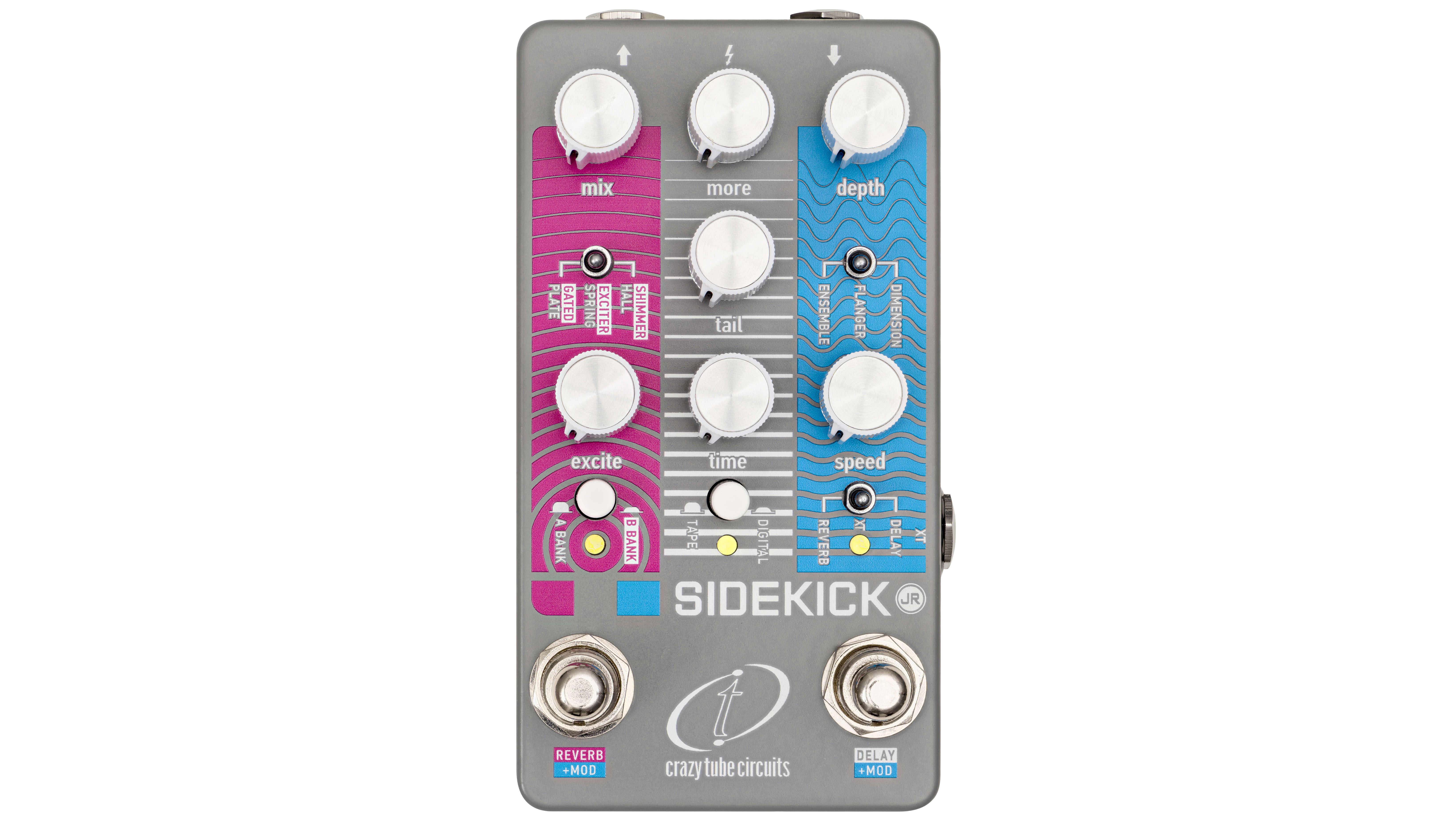
- ORIGIN: Greece
- TYPE: Delay / Reverb / Modulation pedal
- CONTROLS: Reverb: Mix, mode mini toggle, Excite, Bank A/B switch, Reverb + Mod footswitch. Delay: More, Tail, Time, Tap/Digital mode switch, Delay + Mod footswitch. Modulation: Depth, mode mini toggle, Speed, Modulation combination mini toggle.
- CONNECTIONS: Input, Output, XT input
- POWER: 9V DC adaptor (not supplied), 210mA power draw
- CONTACT: Crazy Tube Circuits

Rob is the Reviews Editor for GuitarWorld.com and MusicRadar guitars, so spends most of his waking hours (and beyond) thinking about and trying the latest gear while making sure our reviews team is giving you thorough and honest tests of it. He's worked for guitar mags and sites as a writer and editor for nearly 20 years but still winces at the thought of restringing anything with a Floyd Rose.
“This update reflects everything we believe modern gear should be”: Neural DSP gives the Nano Cortex an almighty power-up with free NanOS 2.0.0 system update
“It’s honestly got me thinking hard about adding one to my own studio set up”: Two Notes Reload II review
“Gloriously adorned with a gold edge burst finish over a gold paisley and sparkle top”: Gretsch unveils the Paisley Penguin – a rare bird that growls – and the Honey Dipper Special, a resonator for all your roots rock manoeuvres
